INTRODUCTION
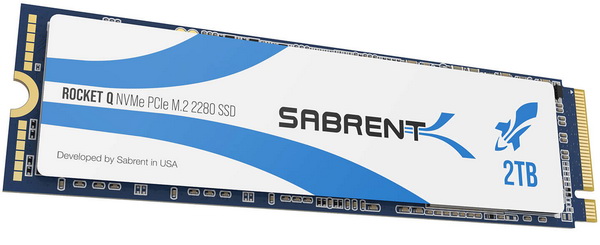
When in the market for a brand new SSD (solid state drive) or even when talking about them there are several names that immediately come to mind like Kingston, Samsung and of course Intel. This is by no means strange, for example when i think about graphics cards the very first brands that come to mind are EVGA, ASUS, GIGABYTE and MSI so this is something that actually happens to everyone. Still there are many smaller but equally impressive manufacturers out there that have taken the market by storm and just like with graphics cards and names like Sapphire when it comes to SSDs, we have Silicon Power. If there's one thing however in the electronics industry that I’ve always liked it's the fact that there are always hidden gems around and the USA based Sabrent seems to be among those.
Sabrent is a leading American manufacturer of computer peripherals and accessories, bringing uniquely styled quality products to consumers worldwide. Sabrent’s commitment is to offer the latest technology and the highest quality consumer electronic products at an affordable cost to everyone. Since its founding, Sabrent has consistently delivered to market a full line of computer peripherals and accessories that incorporate style, quality and the latest technologies available.
Some of you may recall the MLC (multi-level cell) vs SLC (single-level cell) flash memory comparison we used to have with the very first SSDs, that is until the TLC (triple-level cell) type arrived on the scene. Now TLC didn't offer the same durability levels as MLC and SLC but thanks to the addition of a small amount of SLC cache (pseudo-SLC NAND) it was almost as fast and much more affordable. QLC (quad-level cell) flash memory is the latest addition to this and again even though it may not be quite as fast and durable as TLC (and in effect not nearly as fast and durable as MLC and SLC) it's much more affordable, allows for much higher capacities (four times over SLC for example) and again thanks to SLC caching it's quite fast. The Rocket Q line of M.2 NVMe SSDs (available currently in 500GB/1TB/2TB/4TB/8TB capacities) by Sabrent uses QLC flash memory (Micron's 96-layer NAND to be exact) along with Phison's E12S eight-channel controller (Sabrent calls it RKT-303) and 4GB of DDR3L DRAM by Kingston (for the 2TB model i have here). Of course, this isn't the first time we've seen an SSD with the eight-channel (32 CE targets) Phison E12S controller which supports several interesting technologies like SLC caching, StrongECC, SmartRefresh, SmartFlush, LDPC (low density parity check), end-to-end data protection, thermal monitoring, AES-256 encryption, ONFi 2.3/3.0/3.2/4.0 and TCG Pyrite/OPAL support. As for endurance Sabrent reports an MTBF (meantime between failure) of 1.8 million hours with a TBW (Terabytes Written) of 530 (the entire Rocket Q line of SSDs is covered by a 5-year limited warranty).
SPECIFICATIONS AND FEATURES

PACKAGING AND CONTENTS
The Rocket Q 2TB SSD arrived in a small cardboard box that has a product picture at the front right beneath the company logo and next to an Acronis sticker (you can download this cloning software directly from Sabrent's support page).
Another product picture is printed at the rear right over several certifications and a sticker with the serial number and barcode.
Removing the exterior cover reveals an aluminum box.
Sabrent has went the extra mile to create what is easily one of the best looking SSD packages I’ve seen.
Still inside you will only find the Rocket Q SSD and the user manual.
THE ROCKET Q 2TB
The Sabrent Rocket Q 2TB SSD follows the typical M.2 2280 form factor (22mm wide and 80mm long).
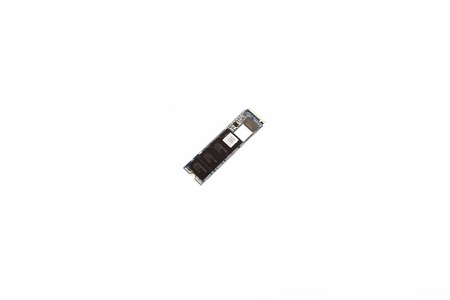
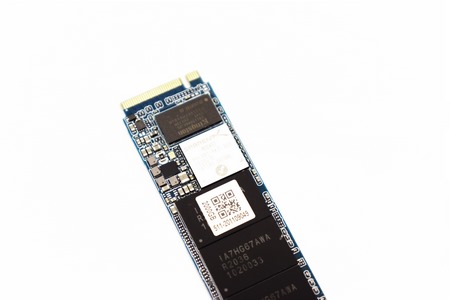
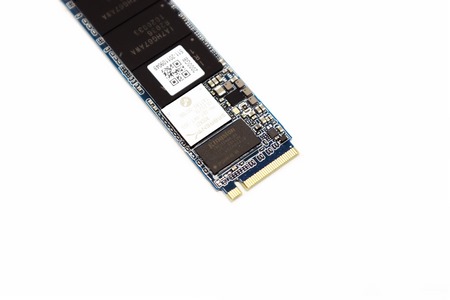
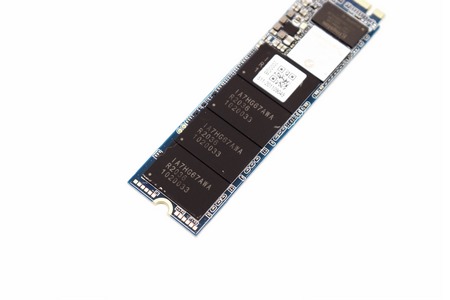 Right under the copper sticker we find the Phison E12S NAND controller, 4GB DDR3L DRAM package (always according to Sabrent) and four Micron 96-layer QLC NAND flash modules (512GB each).
Right under the copper sticker we find the Phison E12S NAND controller, 4GB DDR3L DRAM package (always according to Sabrent) and four Micron 96-layer QLC NAND flash modules (512GB each).
This is a single side SSD so on the other side of the PCB we just see a sticker with the serial number, capacity and a 2D barcode.
ROCKET CONTROL PANEL
The rocket control panel software lets you download other pieces of software from Sabrent and also allows you to check the status of your SSD, its SMART page and of course check online for new firmware updates (none found at the time of this review).
TEST BED
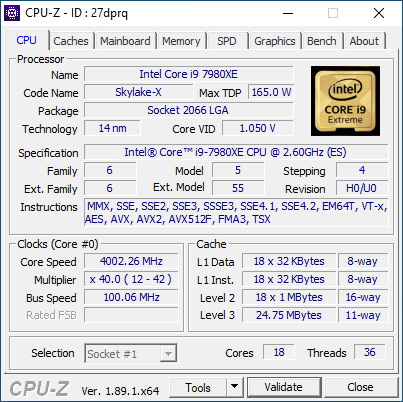

TESTING METHODOLOGY
After over 12 years of testing solid state drives, i’ve concluded that it's almost impossible for any single benchmark suite to accurately measure their performance and that's why in certain benchmark suites we see amazing read/write performance numbers with some drives while in others things are quite different. The reason behind this is that some benchmarking suites are configured to read and write random chunks of data while others read and write constant (sequential) ones. So that's why i always use a very wide selection of benchmarking suites including AIDA64, HD Tach RW, HD Tune Pro, Crystal Disk Mark, Sisoftware Sandra Pro, AS SSD, IOmeter and ATTO. To get the most accurate results each test gets repeated a total of 6 times with the average performance numbers recorded into our charts*. Also, as of February 25th 2015 our results will also include the Storage Networking Industry Association’s (SNIA) IOMeter tests. These tests include a 12 Hour write test used to “simulate” performance degradation over time and a mixed workload test which basically shows what you can expect when using an SSD continuously for roughly two hours. Unfortunately, due to the time required for these tests we repeat them a total of 3 times and not 6 as the above.
Many people have made inquiries about our charts in the past so once again please do keep in mind that the Charts have the average performance numbers of each drive recorded and not the peak (highest) ones. Also, although every single one of these programs can help potential buyers choose the right drive for their needs you should also remember that from any kind of benchmark up to real world usage the gap is not small (and usually most differences will go unnoticed by most people). All tests were performed in a fresh Windows 10 Pro x64 installation complete with every update up to the date of this review.
* Since November 2018 the SSD comparison charts have been divided to 2.5” and M.2 models to reduce their growing size.
** Unless stated otherwise the Ryzen 9 3950x based Test Rig used for M.2 Gen 4 SSD reviews is not located in the lab.
*** As of January 2021 for Gen 3x4 models I’ll be using the Core i9-7980XE test rig (after numerous tests the up to 6% difference in read & write performance compared to the i7-6700 system simply wasn’t enough to justify having an extra test rig around).
TEST RESULTS - AIDA64 / ATTO


TEST RESULTS - HD TACH RW / HD TUNE PRO


TEST RESULTS - SISOFTWARE SANDRA PRO / CRYSTAL DISK MARK
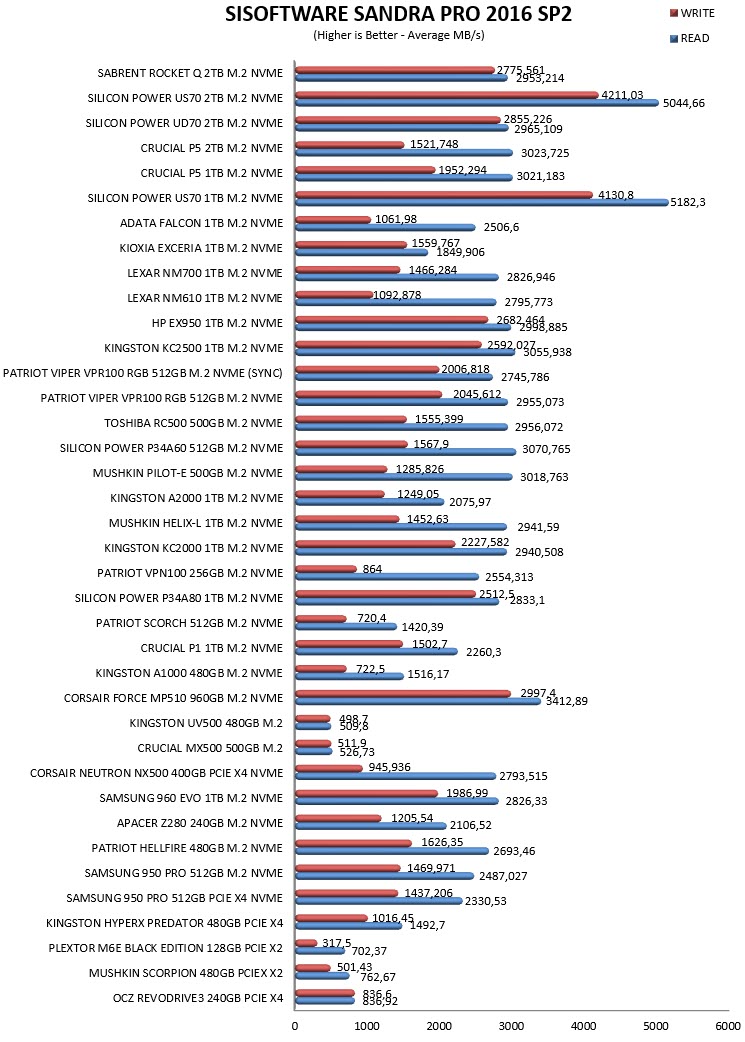

TEST RESULTS - AS SSD / IOMETER
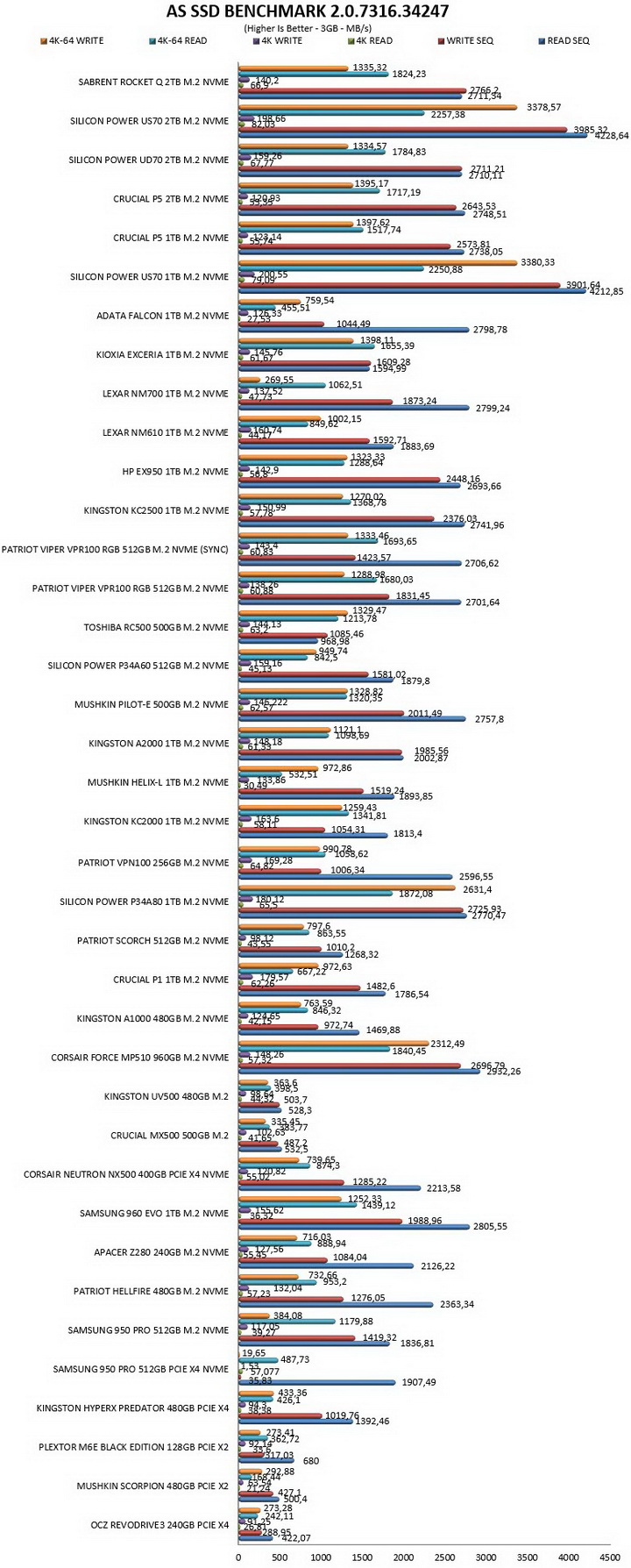
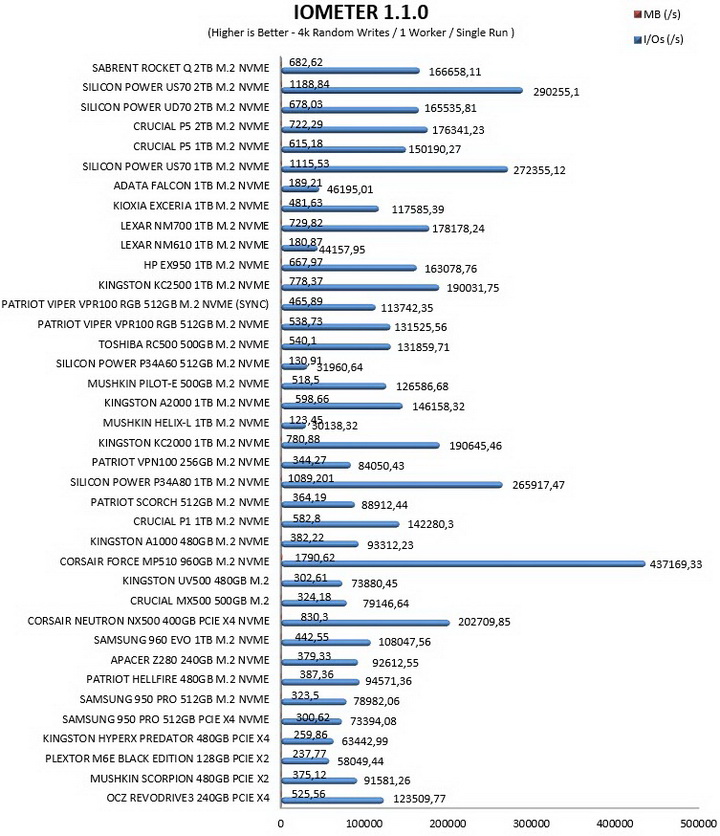
TEST RESULTS - IOMETER SNIA
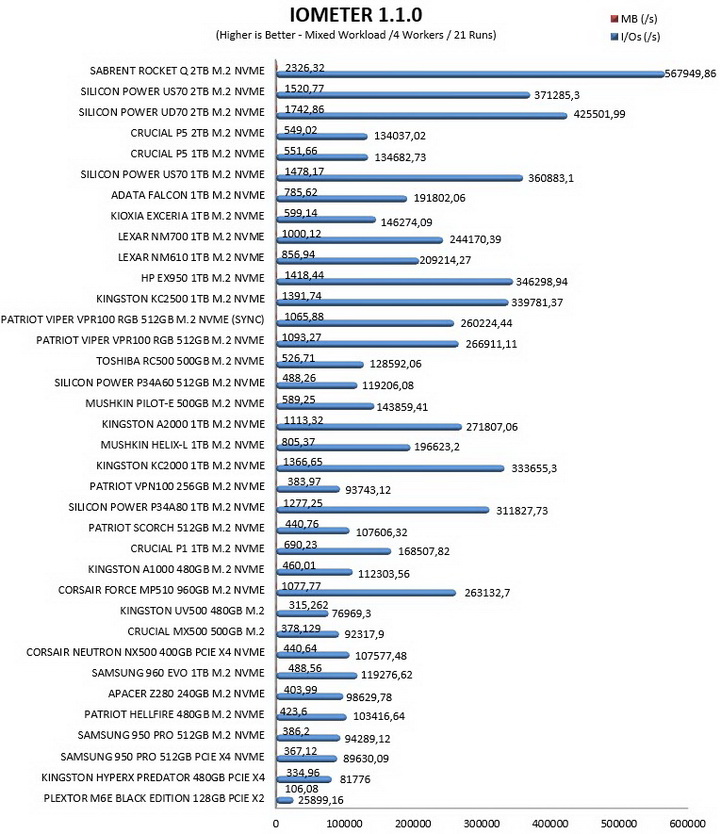
CONCLUSION
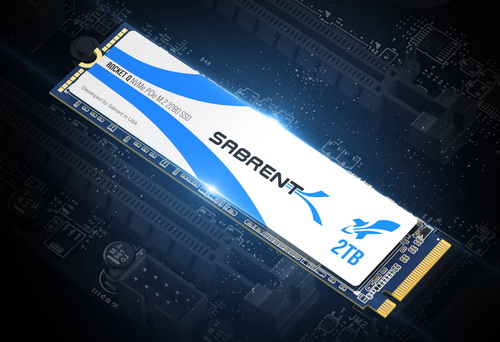
Sabrent is a name I’ve known for a couple of years now so I was always interested to see what they were up to as an SSD manufacturer. Unfortunately, sometimes it takes long for any cooperation to form but after testing their Rocket Q 2TB M.2 NVMe model I believe it was well worth the wait. Of course, as you can all tell the Rocket Q is almost identical to the UD70 line by Silicon Power (minus probably some firmware differences) so it goes to reason that both drives would perform similarly (and they do exchange blows). This of course isn’t a bad thing since these are very fast drives, only downside is their performance after long periods of time (12 hour test) but you can’t have everything with QLC (and my guess is that professionals who really need something like that will look at other models). Still the Rocket Q did better compared to the UD70 (especially in the mixed test where it surpassed every other SSD in the charts), probably due to its copper sticker which did help slightly with temperatures. Also, as you’ve seen I decided to scrap the i7-6700 test rig from this review and onwards. This was mainly due to 2 factors, first that after 6 SSD tests the difference in read & write performance between these two systems (6700/7980XE) didn’t exceed 6% and second because I’m almost finished building a Core i9-10900k test rig. To put things simple, I have no room in the lab for more test rigs (5 is the maximum number) so I had to scrap one and the i7-6700 was the obvious choice since I only had it for M.2 NVMe reviews.
Currently retailing for USD219.98 inside the USA (Amazon.com) and for 286.97Euros inside the EU (Amazon.de) the Rocket Q 2TB M.2 NVMe SSD by Sabrent is priced just a tad higher than expected. Price aside however numbers don’t lie so the Rocket Q 2TB is a very fast SSD which is definitely worth your attention and since it delivers on everything Sabrent markets it for it gets the Golden Award.

PROS
- Among the Fastest Gen3x4 Models in The Market Today (Up To 3400MB/s Read & 3000MB/s Write)
- Top Of The Charts Mixed SNIA Performance Levels
- 1.8 Million Hours MTBF
- Available Capacities (Up To 8TB)
- 5 Year Limited Warranty
- Limited Thermal Throttling (Copper Sticker - Compared To Other Models)
CONS
- Price (For Some)

 O-Sense
O-Sense





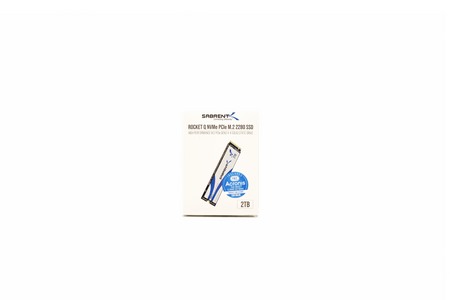
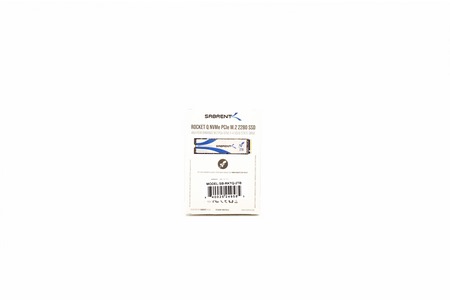
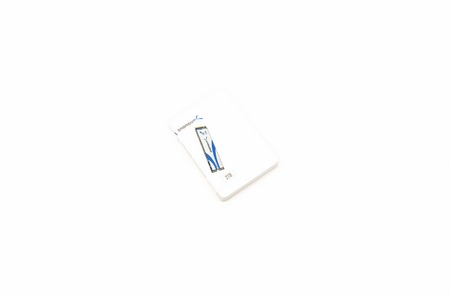
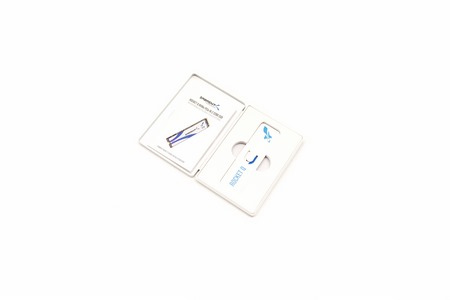
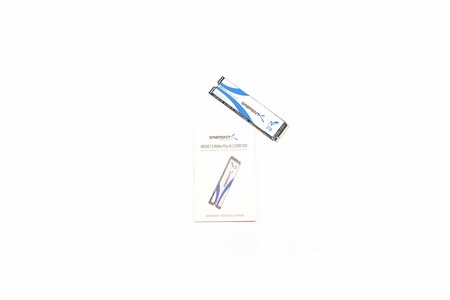
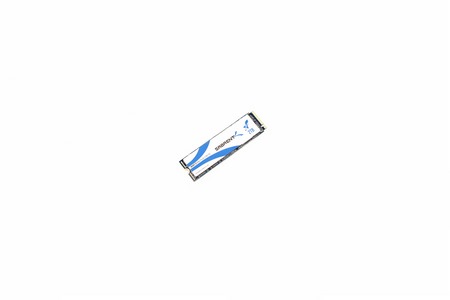
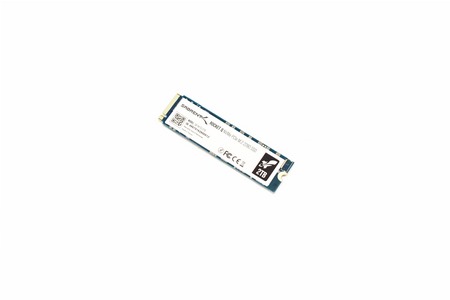
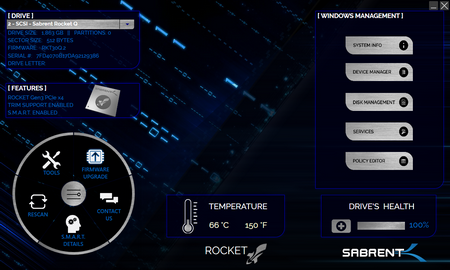
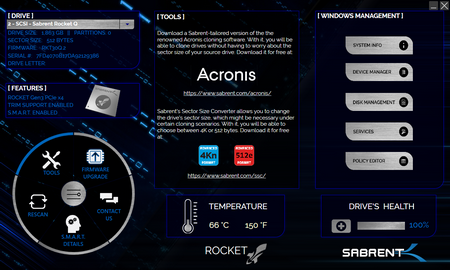
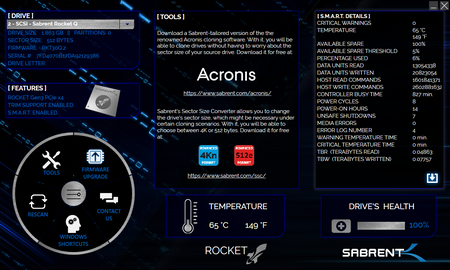
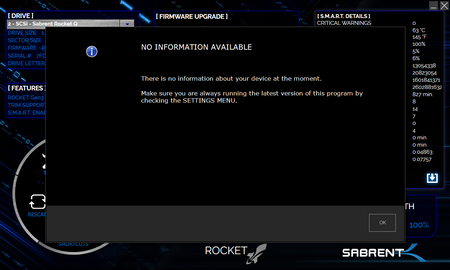
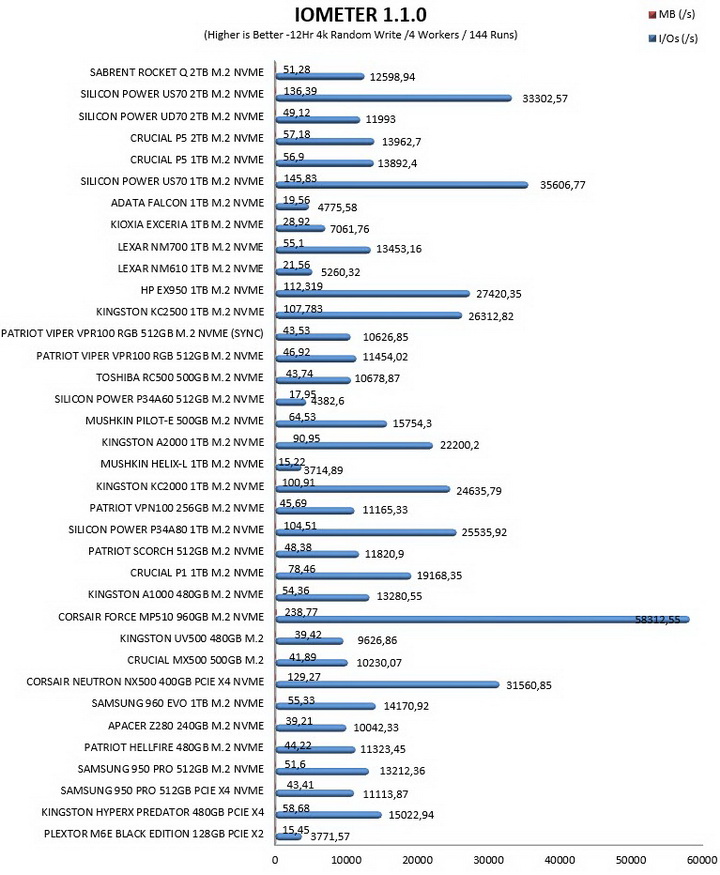
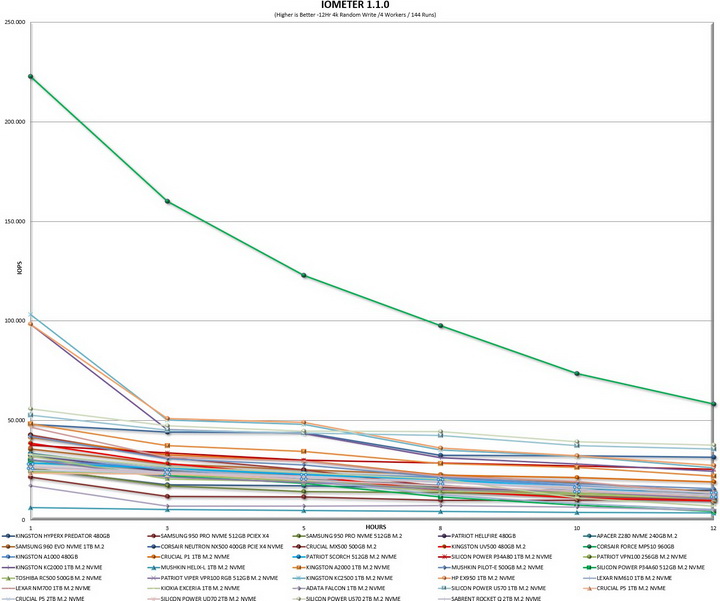


.png)

